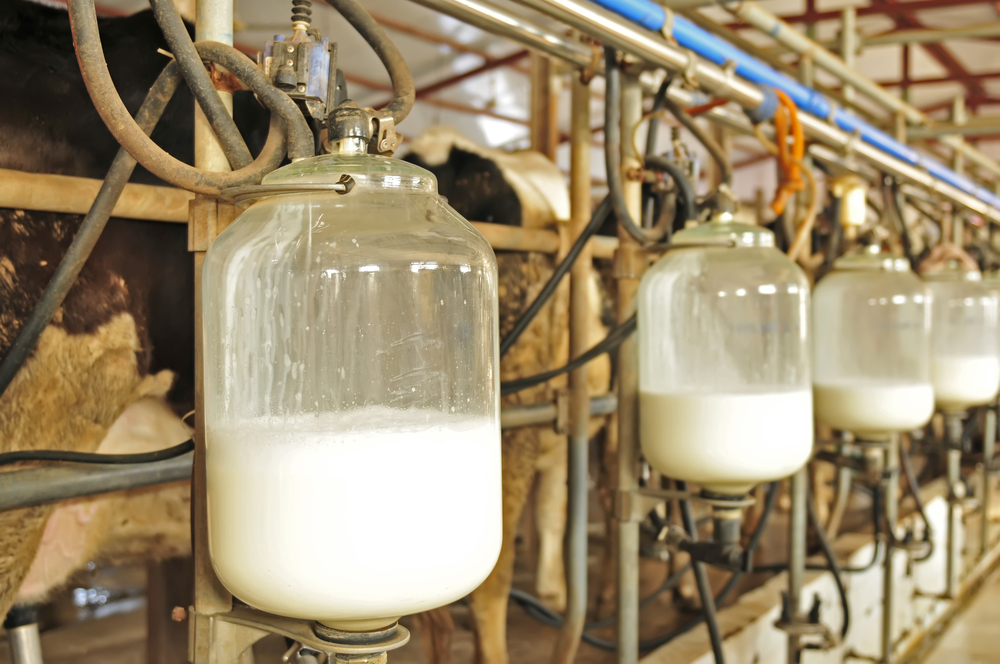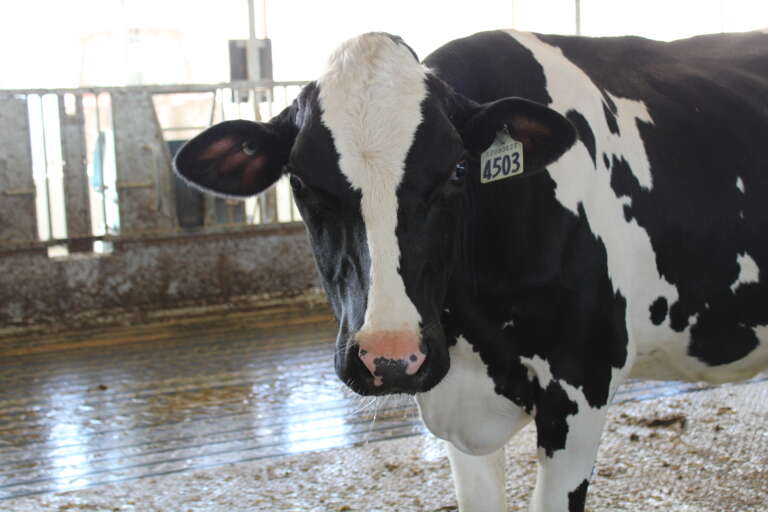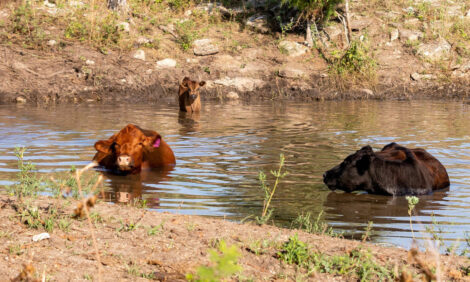



Weekly beef and dairy digest: USDA issues its EU Milk Report and US cattle ranchers cry foul
US cattle ranchers are calling for an investigation of beef packer market manipulation, and USDA analysis indicates that Europe's dairy herd could shrink further.US beef exports make a strong showing in latest week
Net sales of 56,900 metric tonnes (MT) reported for 2021 - a marketing-year high- were up noticeably from the previous week and from the prior four-week average.
Increases primarily for the Netherlands (33,700 MT), China (9,200 MT), Japan (5,900 MT, including decreases of 500 MT), South Korea (4,500 MT, including decreases of 300 MT), and Taiwan (2,200 MT, including decreases of 100 MT), were offset by reductions for Belgium (100 MT).
Exports of 53,100 MT - a marketing-year high - were up noticeably from the previous week and from the prior four-week average. The destinations were primarily to the Netherlands (33,700 MT), Japan (5,900 MT), South Korea (5,100 MT), China (2,900 MT), and Taiwan (1,400 MT).
Iowa Cattle Association wants investigation of packer market manipulation
The Iowa Cattlemen’s Association (ICA) in a letter to Attorney General Merrick Garland and Ag Secretary Tom Vilsack urged them to investigate whether packers violated the Packers and Stockyards Act through price manipulation, collusion, restrictions of competition or other unfair practices.
.jpg)
They point out Tyson, JBS, National Beef and Cargill control 85% of the processing industry, which ICA says has “created a severe bottleneck in the beef supply chain during black swan events and has also opened the door for market manipulation.”
Beef demand has remained high through the Covid-19 pandemic, beef exports hit record highs in March 2021, but while cattle producers are struggling to break even, ICA says “the gross packer margin, on an average steer weighing approximately 1,450 lbs. with a 63% dressing percentage, exceeds $1,000/head.”
The letter also points out that fed cattle delivery times have “consistently been pushed back several weeks following purchase,” and most of those cattle were purchased using “lucrative formula contracts, with details undisclosed to the public.” Sixteen lawmakers are also pushing Merrick and the Justice Department for an antitrust probe.
Argentina’s ban on beef exports impacts Brazilian processors
The Argentine government has announced a 30-day ban on exports of beef and signaled additional efforts to restrict shipments could be coming. Brazilian meatpacking giants Marfrig and Minerva have warned they will be impacted by the halt as well. Both companies use Argentina as an alternative route to export meat to countries like China.

Minerva said its Argentine operations represent around 10% of its revenue, but both companies downplayed the impact of the temporary market closure on their overall bottom-line. Argentine farm groups have halted trading of livestock for nine days to protest the ban.
European Union Milk report
USDA estimates that 2021 EU milk deliveries will grow by 0.3% over 2020 due to ongoing export demand for dairy products, as well as stable domestic demand. Production growth will be limited due to lower dairy herd inventories.
Post expects that dairy processors will increase production of cheese, butter, WDM, and NFDM because of higher milk deliveries. Most additional milk will be used for cheese production.
Dairy cow inventories will continue to decline through 2021, following a general trend toward smaller national herd sizes and more productive animals. However, better herd management, including the use of high-quality genetics, will increase milk yields and compensate for the smaller herd sizes.
USDA estimates that in 2021, domestic consumption of cheese and butter will increase due to growing demand and higher production. 2021 fluid milk consumption will remain about the same as in 2020, while 2021 NFDM consumption will decrease from 2020 and return to historic average levels.
In 2021, WDM consumption will increase due to higher demand and reduced exports. Fluid milk consumption in the first half of 2021 will remain on par with 2020’s elevated level, as the COVID-19 pandemic continues to push consumption.

The agency forecasts that fluid milk consumption will eventually return to the previous long-term shift away from fluid milk toward other dairy products and milk substitutes when pandemic restrictions abate.
According to Milk Market Observatory* (MMO), in March 2021 the farmgate price for raw milk in the EU27 (without the UK) was €35.02 ($42.4) per 100 kilograms, 1.5% above the March 2020 price. EU27 farmgate milk prices have increased slightly since January 2021. As of 2 May 2021, the EU27 internal cheese (cheddar) price was 3% above the May 2020 price, while WDM, butter, and NFDM prices were 20, 40, and 30%, respectively, higher than May 2020 prices.
In spring 2020, COVID-19 created short-lived disruptions throughout the supply chain. EU milk processors adapted by converting surplus liquid milk into butter and NFDM, with market prices across dairy commodities in free fall. The spring 2021 price jumps for butter, NFDM, and WDM reflect a normalization of markets following last year’s market disruptions.
USDA estimates that 2021 cheese exports will continue to grow due to strong global demand. Despite higher prices, supply chain disruptions, and the pandemic-related drop in demand from the food service sector in the first half of the year, 2021 butter and NFDM exports will increase over 2020 due to growing world demand.
Post estimates that 2021 WDM exports will decline from 2020 due lower anticipated demand from Nigeria. Fluid-milk exports will remain at the previous year’s level. In response to the dairy market disruptions caused by COVID-19, on 4 May 2020, the EU issued Commission Delegated Regulation (EU) 2020/591 authorizing a temporary exceptional Private Storage Aid (PSA) scheme for cheese, butter, and NFDM.
According to MMO, as of December 2020, PSA cheese, NFDM, and butter stocks accumulated from May to November 2020 had sold out. The EC opened its annual public intervention scheme for butter and NFDM from 1 March to 30 September 2021. As March and April 2021 butter and NFDM market prices were above intervention prices, butter and NFDM were not eligible for intervention storage.

USDA’s latest US dairy retail report
Conventional dairy ad numbers decreased 1% this week. The most advertised conventional dairy item this week is 48 to 64-ounce containers of ice cream. Ad numbers increased 26% from last week. The national weighted average price is $3.05, down $0.15 from last week.
Conventional 8 oz. cream cheese has an average price of $1.80, down $0.08 from last week. Conventional cream cheese ad numbers decreased 27%. The weighted average advertised price for conventional 8-ounce shred cheese is $2.65, up $0.18 from last week. This is the most advertised conventional cheese category. The conventional 8-ounce block cheese weighted average advertised price is $2.58, up $0.14 from last week. Conventional cheese ad numbers increased 8%.
The national weighted average price for conventional Greek yogurt in 4-6-ounce containers, the most advertised conventional yogurt container size, is $0.99, up $0.03 from last week. The national weighted average price for conventional yogurt in 4-6-ounce containers is $0.59, up $0.11 from last week. Conventional yogurt ad numbers increased 2%.
The national weighted average price for conventional half gallon milk is $1.38, down from $2.73 last week. The national weighted average advertised price for organic half gallons is $4.16, up from $3.82 last week. This results in an organic price premium of $2.78.
TheCattleSite News Desk
IMPORTANT NOTE: I am not a futures broker and do not manage any trading accounts other than my own personal account. It is my goal to point out to you potential trading opportunities. However, it is up to you to: (1) decide when and if you want to initiate any traders and (2) determine the size of any trades you may initiate. Any trades I discuss are hypothetical in nature.
Here is what the Commodity Futures Trading Commission (CFTC) has said about futures trading (and I agree 100%): 1. Trading commodity futures and options is not for everyone. IT IS A VOLATILE, COMPLEX AND RISKY BUSINESS. Before you invest any money in futures or options contracts, you should consider your financial experience, goals and financial resources, and know how much you can afford to lose above and beyond your initial payment to a broker. You should understand commodity futures and options contracts and your obligations in entering into those contracts. You should understand your exposure to risk and other aspects of trading by thoroughly reviewing the risk disclosure documents your broker is required to give you.



